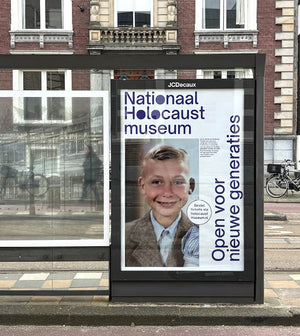Nationaal Holocaust Museum
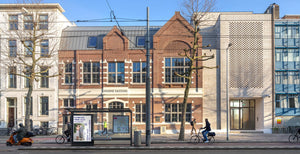
The National Holocaust Museum is located in the former Kweekschool (nursery school) and the Hollandsche Schouwburg across the street.
Project Nationaal Holocaust Museum
Location Amsterdam
Architect Office Winhov
Furniture Lensvelt Contract furniture
Photography courtesy of Nationaal Holocaust Museum
MWA Hart Nibbrig, Stefan Müller, Thijs Wolzak.
On March 11, 2024, King Willem-Alexander opened the National Holocaust Museum on Plantage Middenlaan in Amsterdam. The museum offers an in-depth look at the history of Dutch Jews during World War II, with authentic objects and stories, including the original archive of the Jewish Council. It transcends mere facts and highlights both the vulnerability of victims and the human side of perpetrators. Housed in historic buildings with tragic backgrounds, the museum invites visitors to personally connect, reflect and honor the past.
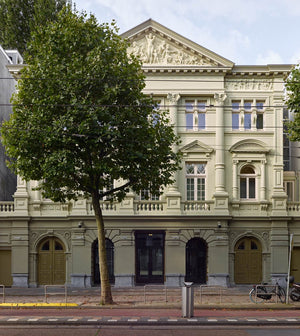
The Hollandsche Schouwburg right across the street from the museum..
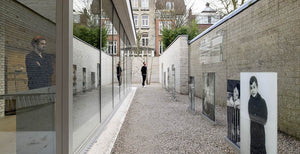
Photographs of Jewish children in the garden to accentuate what happened in this location.

In the auditorium are stackable This Chairs 141 applied that are upholstered in beautiful shades.
Architecture and renovation
With care and attention, architects Uri Gilad and Inez Tan of Office Winhov created the building's design, aiming to create spaces that bring the site's story to life in architecture. In renovating the former Nursery School, Office Winhov carefully combined old and new elements. The contours of the old facade were restored, and historic and modern elements also come together harmoniously inside the building. Thus, they retained historical elements, such as the original school structure and escape routes through the corridor. Materials were carefully chosen to create a light and open building that highlights the events of the Holocaust.
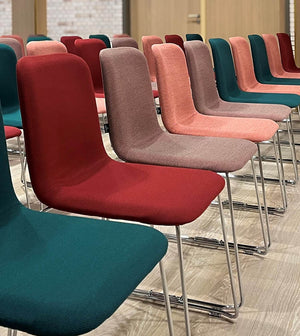
This Chairs 141 are equipped with a linkage system.
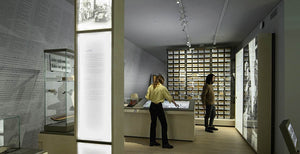
The walls of the exhibition halls are covered from ceiling to plinth with texts including anti-Jewish measures.

The cafe at the former 'kweekschool' features 2THRD oak chairs with round Meeting tables with oak tops.
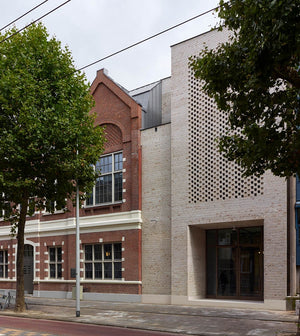
The starting point was to make the new building fit into the city street scene says Uri Gilad of Office Winhov.
The furniture
The furniture
Lensvelt is proud to have contributed to this important project. The high-quality furniture, carefully selected by Office Winhov, fits perfectly with the museum's vision. They contribute to the atmosphere of respect and introspection, and inspire visitors to research, reflect and remember.
Lensvelt's carefully selected furniture contributes uniquely to the atmosphere of the National Holocaust Museum. Take, for example, the timeless and elegant 2THRD Chair, which subtly enriches the spaces with its clean lines and comfortable seating. Or the understated yet powerful look of the This Chair, which invites visitors to pause and reflect. In addition, the stackable RNA Tables and the 4000 Meeting Tables not only offer practical functionality, but also serve as symbols of connection and community within museum spaces
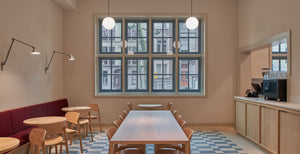
The museum cafe is a good example where historical and modern elements come together, reflecting the atmosphere of the entire museum.
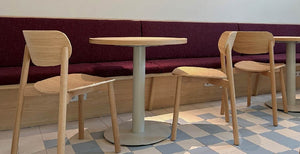
The 4000 Meeting tables were specially fitted with oak tops for the museum.
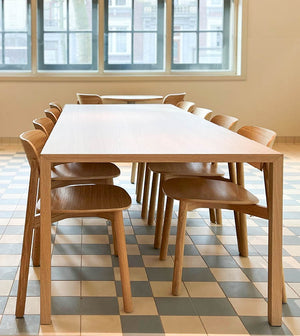
Oak 2THRD chairs create a warm atmosphere in the cafe.
The Hollandsche Schouwburg Knowledge Center
Directly across from the museum is the Hollandsche Schouwburg, once a deportation site for Jews during the war, now a tribute to the victims. The floors above the entrance have been converted into education rooms, where visitors can learn more about people, objects, photographs and stories from the museum, especially through digital resources and video clips. This provides an important resource for research on the persecution of Jews in the Netherlands and commemorates the more than 104,000 Dutch Jews who did not survive the Holocaust.
In addition, witness statements can be viewed, special is access to the entire Visual History Archive of the USC Shoah Foundation, initiated by Steven Spielberg in 1994. The video archive contains more than 56,000 testimonies about the Holocaust and other genocides.
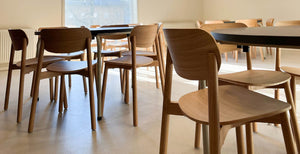
in the education room for adults the same 2THRD oak chairs are placed with greystackable RNA tables.

2THRD stools were used in the classrooms for schoolchildren combined with stackable RNA tables.
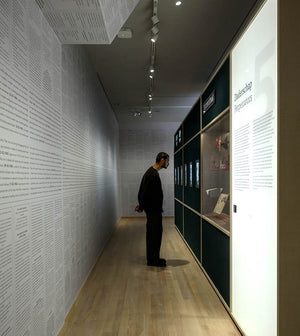
A 'lifeline projection' on the walls shows subtly animated texts about the victims.

The Henriette Pimentel garden, named after the director of the nursery who rescued 600 Jewish children, now an important remembrance site.
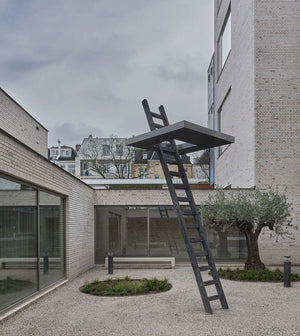
In the outdoor space sculpture 'Family Tree'by artist and inventor Gabriel Lester .
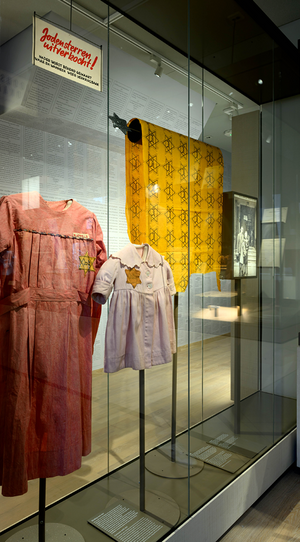
Some 200 objects from private donors are on display, objects that have often never been shown before.
Saved from the creche
The Henriette Pimentel garden, named after the director of the then crèche is now a memorial site. When Jewish families were gathered at the Hollandsche Schouwburg for deportation, the crèche across the street (now the Holocaust Museum) provided a refuge for the children of these families.
Pimentel, a courageous resistance woman, organized risky evacuations of these children to hiding addresses. The children were discreetly removed from the administration and entrusted to the resistance.
For the older children, the streetcar stop between the Hollandsche Schouwburg and the creche/ nursery school was an important resource. Here they could escape from the sight of the German guards running along the moving streetcar. The little ones were ingeniously hidden in bags, baskets or boxes to be smuggled out of the creche.
After nine months of resistance, Pimentel was arrested in 1943. She was taken to Westerbork and later transported to Auschwitz, where she was murdered. Pimentel saved more than 600 Jewish children.
Family tree
In the outdoor space of the National Holocaust Museum stands a work of art called "Family Tree" by artist Gabriel Lester, as a tribute to the hiding of Jews. The work was donated by the National Thanksgiving Sign Foundation and is accompanied by an olive tree, referring to the olive trees at Yad Vashem (Holocaust Museum in Jerusalem), planted in honor of the righteous among the nations.
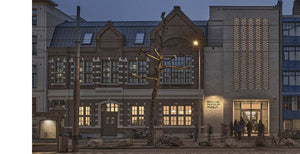
The Nationaal Holocaustmuseum is a transparent and light museum building designed to encourage reflection and find answers.
